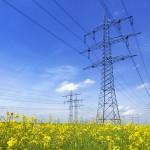
Imagine not being able to buy food or clothing from any country apart from your own. How boring – and expensive – our lives would be. Yet this is the case with most of our electricity. Because our power grids have few links between countries, 95% of power in Europe is consumed in the country in which it is produced.
An updated, Europe-wide power grid, with stronger, more numerous interconnectors, would allow wind power to be transported from wherever in Europe it’s blowing to wherever in Europe the consumers are, and open up cross-border trade in electricity.
Opening up the power market in Europe would have a far greater impact on thousands of consumers, bringing prices down as fuel-free wind power and other renewables would be preferred by the market to fossil fuels with unpredictable costs.
 In an impressively unique attempt to promote the global need for the creation of green jobs, world leaders attending last week’s G20 summit in Seoul were each asked to set aside one hour in the next few months to learn how their countries can benefit by economic solutions to complex 21st century problems.
In an impressively unique attempt to promote the global need for the creation of green jobs, world leaders attending last week’s G20 summit in Seoul were each asked to set aside one hour in the next few months to learn how their countries can benefit by economic solutions to complex 21st century problems.
“Creating green jobs on a massive scale is a two-way street,” Ditlev Engel, President and CEO of Vestas Wind Systems A/S, said in a press release announcing the plan put forth at the G20 Business Summit, a largely unreported side session to the main meeting, by a working group for creating green jobs.
“Give us the policy frameworks, and we’ll give you the results. We’ll make the investments, we’ll take the risks, and we’ll create the jobs. But this requires a policy framework that re-balances the incentives indisputably in favour of green investment.”
 EWEA’s GRIDS 2010 conference is two weeks away. But what is it about, and why is it happening?
EWEA’s GRIDS 2010 conference is two weeks away. But what is it about, and why is it happening?
“Grids is a red-hot topic, which is at the forefront of policy makers’ minds right now”, explains Amy Parsons, EWEA’s Conference Manager. “The grids issue affects the wind energy industry because without a fully connected pan-European grid wind power cannot be effectively taken from where it is produced to where it is needed. And next year will be especially crucial, as the Commission is just about to publish its infrastructure package outlining how the European Union intends to ensure that a European grid becomes a reality.”
So from a political point of view it seems like a good time to organise an event focusing on electricity grids, especially from the point of view of the European wind industry.
 South Korea has confirmed it intends to become a major player in the offshore wind sector with an announcement last week that an $8.2 billion (€5.9 bn) wind farm will be built in the Yellow Sea.
South Korea has confirmed it intends to become a major player in the offshore wind sector with an announcement last week that an $8.2 billion (€5.9 bn) wind farm will be built in the Yellow Sea.
With an eye to reducing its dependence on expensive imported fossil fuels, the nation will begin testing 20 5-MW wind turbines from various South Korean manufacturers by 2013. This will be followed by the installation of an additional 180 5-MW machine three years later and 300 more similar sized turbines by 2019.
“The plan is to make South Korea the world’s third-largest country in terms of offshore wind power generation,” Kang Nam-hoon, head of the Ministry of Knowledge Economy’s energy and climate change policy division, was reported as telling a press briefing.
 The International Energy Agency’s 2010 World Energy Outlook, released today, should finally stamp out the myth that renewable energies are dependent on subsidies.
The International Energy Agency’s 2010 World Energy Outlook, released today, should finally stamp out the myth that renewable energies are dependent on subsidies.
“Fossil-fuel consumption subsidies amounted to $312 billion in 2009”, says the IEA, while renewable energies in the same year received just $57 billion of “government support” according to the IEA.
In other words, renewables got just $1 for every $5-6 given to fossil fuels last year.
The IEA goes on to forecast that government support for renewables will go up to $205 billion in 2035. That is still – a quarter of a century in the future – less than two-thirds of the sum being doled out to fossil fuels today.
In this time of budgetary constraints, governments would be wise to remove the billions of dollars spent in subsidising fossil fuels as well as nuclear. That in turn would mean less subsidies would be needed to bring in new, smarter and cleaner energy technologies such as wind power.








 Comments
Comments



